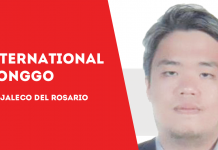
THE FIGURES presented by the Department of Human Settlements and Urban Development (DHSUD) Region 6 — nearly half a million housing units needed in Western Visayas — also underscores a profound crisis of affordability and accessibility. While the urgency to construct houses is clear, the ability for low and middle-income families to afford these homes is a persistent issue that requires innovative, immediate, and inclusive solutions.
Current housing programs, including the laudable Pambansang Pabahay Para sa Pilipino (4PH) Program, aim to tackle the backlog by increasing the supply of homes. However, the question of who can afford these homes remains inadequately addressed. The cost of housing continues to outpace income growth in the region, putting the dream of homeownership out of reach for many. This disparity not only perpetuates inequality but also stunts regional growth, as a significant portion of the population spends a disproportionate amount of their income on housing or lives in inadequate conditions.
To truly make a difference, policy measures must go beyond the construction of housing units to include comprehensive strategies ensuring these homes are both affordable and accessible to all income groups, especially the disadvantaged.
The government could expand subsidies for low-income homebuyers, ensuring that housing loans are manageable. This could include lower interest rates for first-time buyers or those below a certain income threshold.
Local government units (LGUs) can revise zoning laws to encourage the development of affordable housing. This could involve mandates for a certain percentage of new developments to be allocated as affordable units or incentives for developers to include mixed-income housing.
Also, implementing rent control measures to protect tenants from steep rent hikes and gentrification can ensure that existing residents can afford to stay in their communities even as new developments arise.
And why not push for direct investment in public housing? Increased investment in public housing that is well-connected to job opportunities, schools, and healthcare facilities can offer a viable solution for families that are unable to access the private housing market.
And yes, streamline the regulatory processes. Reduce the bureaucratic red tape that can drive up the costs of housing construction and, by extension, the price of new homes. Streamlining these processes can help keep prices down and speed up the delivery of new housing.
The government may also consider so-called community land trusts. Supporting the establishment of community land trusts could maintain affordable housing stock in perpetuity, protecting these assets from the speculative real estate market and prioritizing community control and stability.
Addressing housing affordability in Western Visayas requires a broad approach that considers economic, regulatory, and social dimensions. By implementing these policies, we can ensure that housing is not just a commodity, but a fundamental human right accessible to all.



